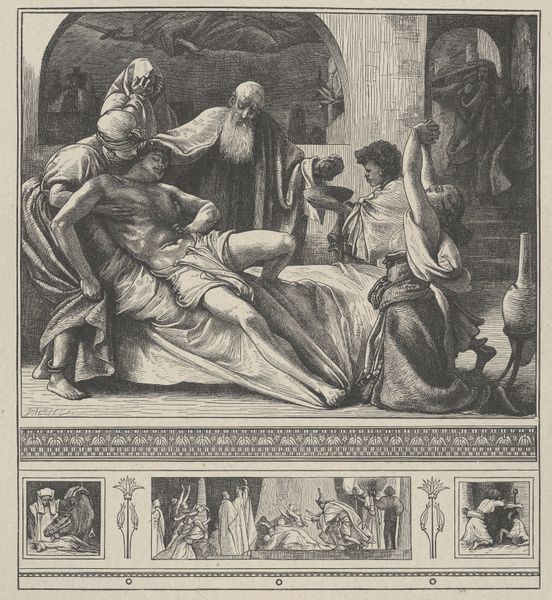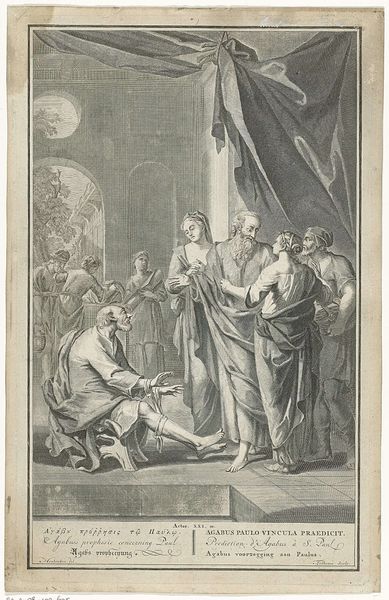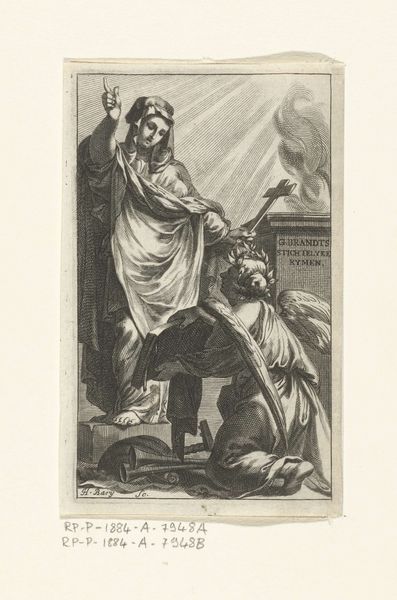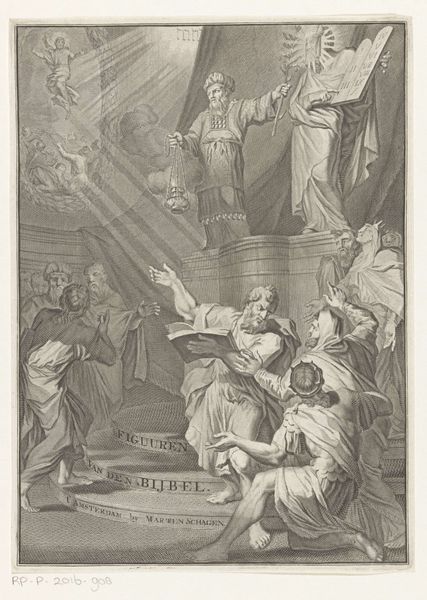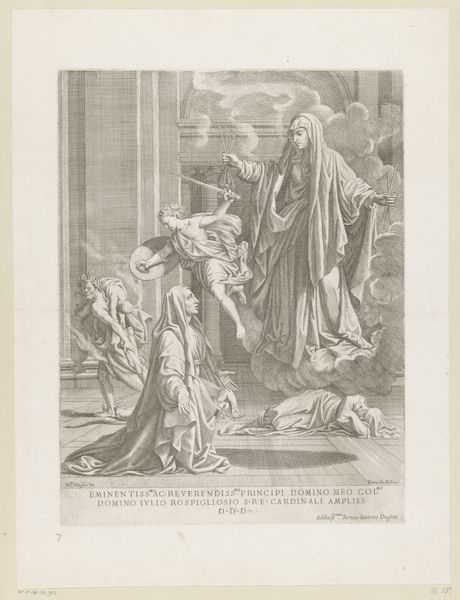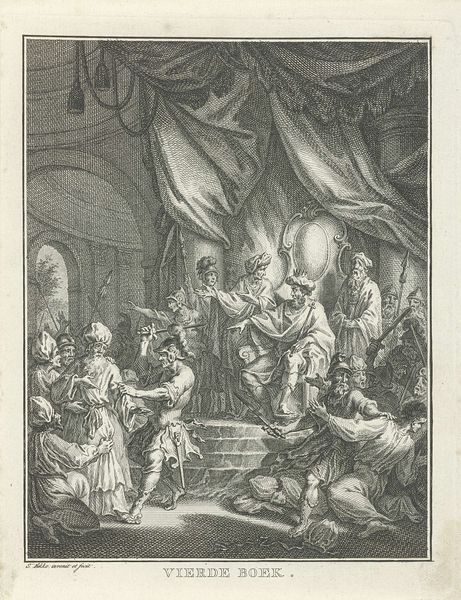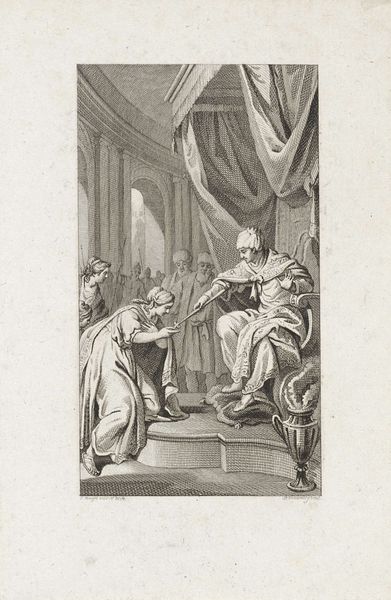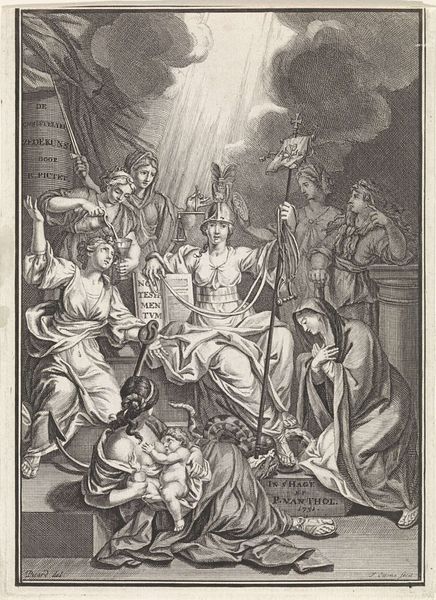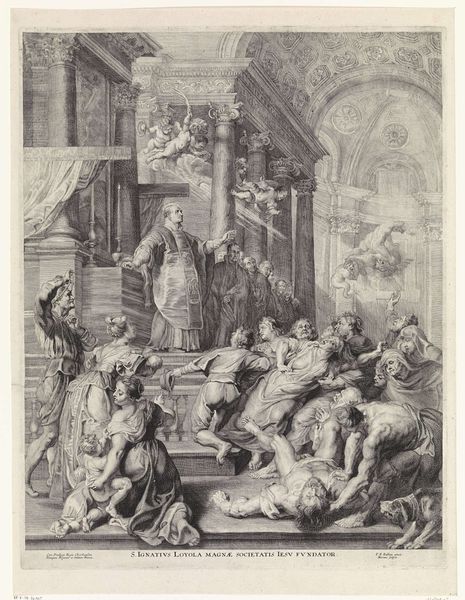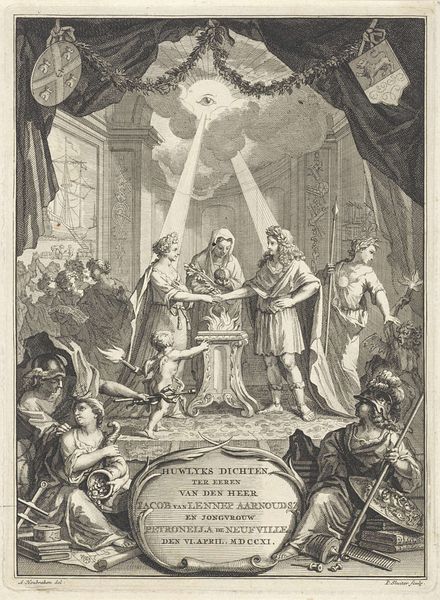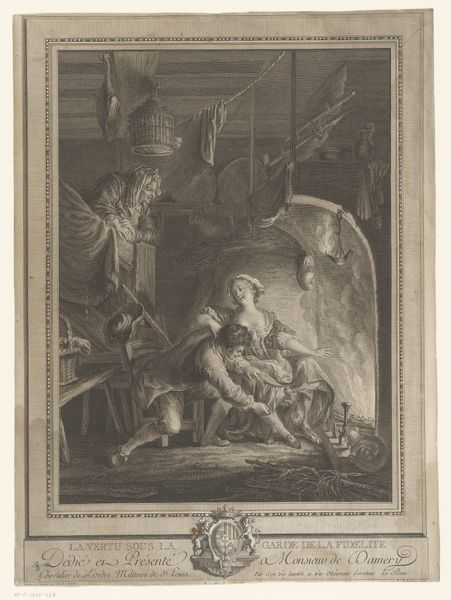
print, paper, pen, engraving
#
baroque
#
pen drawing
# print
#
pen illustration
#
figuration
#
paper
#
pen-ink sketch
#
line
#
pen
#
history-painting
#
engraving
Dimensions: height 251 mm, width 175 mm, height 353 mm, width 253 mm
Copyright: Rijks Museum: Open Domain
Editor: This is "Penelope Weaving the Shroud for Laërtes," a 1733 engraving by Bernard Picart, housed here at the Rijksmuseum. It's incredibly detailed for a print, and it feels... well, kind of melancholic, doesn't it? All that careful line work creating such a subdued atmosphere. What draws your eye in this piece? Curator: Ah, melancholic – yes, that’s precisely the feeling Picart so masterfully evokes! I’m drawn to Penelope’s unwavering gaze, even while the little cupid attempts to halt her from undoing what she weaves! This intricate scene from the *Odyssey*… it's not just a historical depiction but a rather astute study on feminine wiles! What is actually keeping Odysseus's suitors at bay is what this scene so gracefully conveys. The print, of course, places a certain Enlightenment polish on a Greek epic. Editor: "Feminine wiles" is interesting! I always saw Penelope as a victim in this scene, desperately stalling to avoid remarriage. But is Picart implying she's in control, almost playfully deceiving them? Curator: Perhaps "control" is too strong a word, but I think Picart recognizes the agency Penelope finds within her limited circumstances. Do you notice the cupid’s facial expression? And consider that the shroud unravels each night in secret. It adds another layer. It's like she's performing a delicate dance between societal expectation and her own desires. Editor: I see what you mean. The cupid isn't forceful, and the figures don't seem anguished or desperate... it’s subtle. More complex than just simple despair. I never thought about her as subtly fighting back. Curator: Indeed. And art often resides in that "in-between" space, doesn't it? Thank you for bringing a new awareness of those subtleties, it's how it remains eternally new! Editor: Thanks so much. I think I understand how cultural context can totally change how we see the art piece. It made me reflect.
Comments
No comments
Be the first to comment and join the conversation on the ultimate creative platform.
